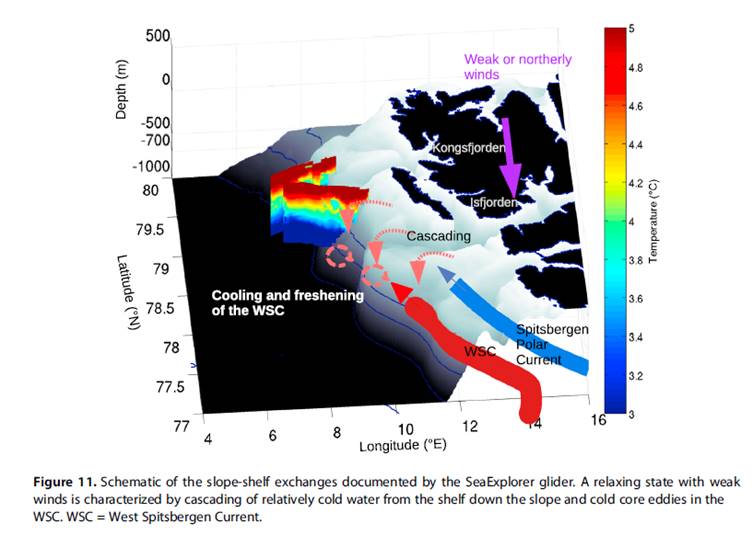Picture (above): Ocean Glider. Credit: Alseamar.
Ocean eddies have long been suggested to play a key role in regulating the inflow of warm Atlantic Water into the Arctic. Observing eddies in the Arctic is however difficult: not only is the Arctic region difficult to access, but in addition ocean eddies become smaller and smaller the further north you go and therefore are hard to detect in the Arctic!
Using novel ocean glider technology, a team of researchers from France, Norway, and Australia observed small eddy-like lenses of cold water in July 2017 along the western Svalbard shelf in the Arctic.
These lenses were between 4-7 km wide and found between 200 and 400 m depth at about 79oN, close to the summer Arctic summer sea ice edge. Traveling with the warm West Spitsbergen Current that flows north into the Arctic, the lenses were surprisingly cold and fresh.
The analysis of the data revealed that the lenses were formed when cold fresh water from the Svalbard shelf cascades down the Svalbard slope, and then detaches into the West Spitsbergen current.

Once in the current, the cold water lenses are expected to slowly mix with the warm Spitsbergen current, cooling it as they disperse. This cooling mechanism could potentially explain a significant fraction of the cooling of the Spitsbergen current as it enters the Arctic.
While observing these cold eddy-like lenses in the Arctic is a first, much work remains quantifying their cooling effect, their frequency and seasonality.
- Paper: Koenig, Z., Meyer, A., Provost, C., Sennéchael, N., Sundfjord, A., Beguery, L., et al. (2018). Cooling and freshening of the West Spitsbergen Current by shelf-origin cold core lenses. Journal of Geophysical Research: Oceans, 123. https://doi.org/10.1029/2018JC014463
